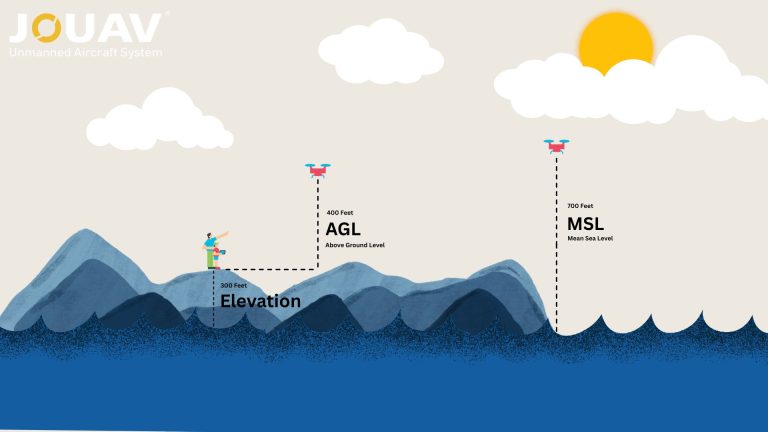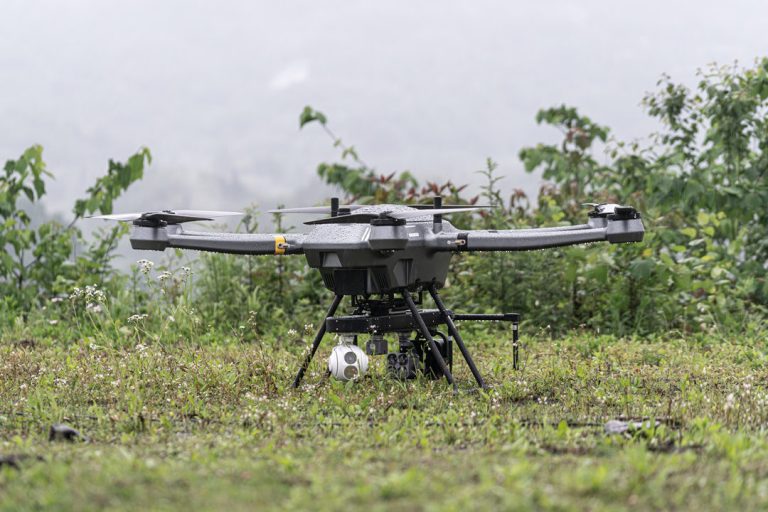Guide to Maritime Security: Safeguarding Ports, Vessels, and Cyber Spaces
The maritime industry, with roots reaching deep into history, fuels the global economy by handling a staggering 90% of world trade.
However, as this industry grows, it encounters a new wave of challenges - from tangible threats to invisible cyber vulnerabilities.
Maritime security isn't just about safeguarding ships; it touches on environmental preservation, economic development, and human safety.
These issues reshape how everyone in the industry, from ship owners to insurers, conducts business and manages expenses.
In this article, we will cover key elements like port security, defense against terrorism, risk assessment models, and the pivotal role of cyber security.
Let's dive right in!
What is Maritime Security?
Maritime security is a complex and multifaceted concept, ranging from ensuring port security to safeguarding the welfare of sailors. It involves a comprehensive approach to protecting various elements within the maritime domain.
In essence, maritime security can be dissected into four key concepts:
Ecosystem Health: One critical aspect of maritime security is the preservation of marine ecosystems. Efforts are directed towards preventing and mitigating activities such as marine pollution and illegal fishing to maintain the ecological equilibrium of the oceans.
Global Trade and Transportation: Maritime security is intricately linked with economic development, particularly in the context of global trade. Approximately 90% of the world's trade is facilitated through maritime transportation. Protecting shipping routes and ports, along with preventing illegal trade activities, becomes imperative for ensuring a country's economic prosperity.
Order at Sea: Maritime security is linked to the maintenance of order at sea, including protection against threats such as piracy and robbery, in order to ensure national security and stability.
Human Safety: Maritime security is also directly linked to human security, especially in terms of guarding against illegal activities such as human trafficking. Ensuring safety on and off ships and guarding against potential human disasters is an important task in maintaining human security.
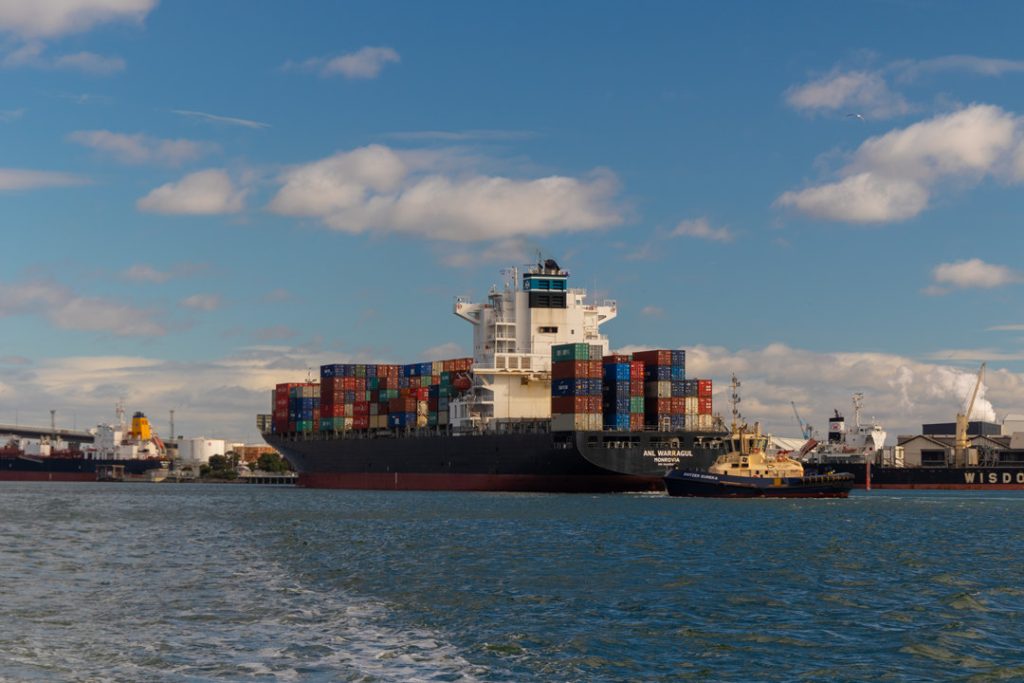
The increased awareness of maritime security dates back to the late 1990s and early 2000s, with a notable surge after the events of 9/11. This heightened awareness led to a growing interest in protecting against terrorism in ports and at sea.
National and international organizations responded by establishing and evolving various maritime security standards, exemplified by the ISPS Code developed in 2002 in response to terrorist attacks.
In practice, maritime security involves active surveillance, inspection, and proactive procedures to detect and minimize threats, both intentional (such as terrorism) and unintentional, to ensure the overall safety and security of maritime activities.
Common Issues with Maritime Security
The vast and intricate maritime domain, a linchpin for global trade and resource transportation, confronts an array of security challenges that demand vigilant attention.
Cargo Theft
A significant challenge faced by the maritime industry is the pervasive issue of cargo theft in the U.S., amounting to a staggering $15 to $35 billion enterprise. This criminal activity affects various entities, including seaports, airports, trucking companies, and shipping companies daily.
Cargo theft is not limited to high-value goods such as semiconductors; even everyday items like food and beverages are targeted. For instance, a thief in the Seattle area posed as a Safeway employee, attempting to steal over $700,000 worth of king crab for resale. Similarly, in Spain, thieves stole 12,500 gallons of extra virgin olive oil, emphasizing the diverse range of targeted products.
Supply-chain security faces various challenges, each with the potential to negatively impact businesses. Bogus companies, often operated by organized crime, may pick up goods but never deliver them to their intended destination. Corruption can seep into the supply chain through bribery of officials, drivers, and warehouse managers, facilitating theft and redirection of goods.
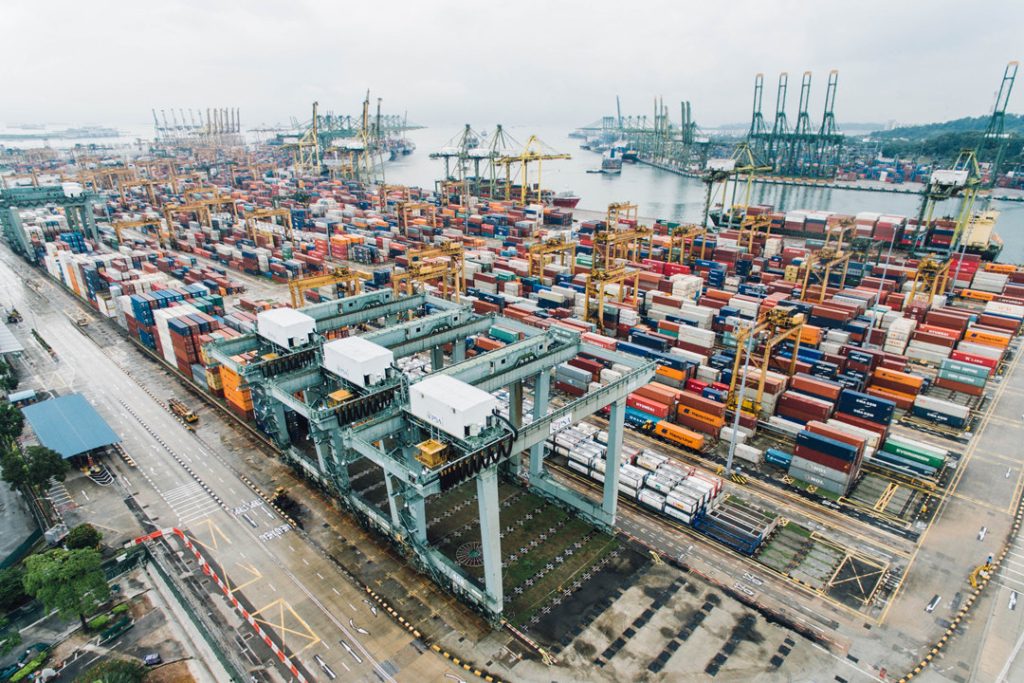
Drug Smuggling And People Trafficking
Smuggling poses an ongoing challenge, with the trafficking of both drugs and people emerging as pressing concerns.
Despite advancements in the maritime industry's anti-narcotics efforts, traffickers are continually innovating their methods. For instance, they have started concealing drugs within vessel piping systems for entire voyages.
The 2015 refugee crisis spotlighted the issue of human smuggling, which has become a lucrative enterprise for criminal networks. These smugglers leverage sea routes to facilitate illegal migration.
Human smuggling is closely tied to grave human rights violations and fatalities, especially in maritime contexts. The loss of refugees' lives in the Mediterranean Sea serves as a poignant reminder of the urgency to address human smuggling. This urgency is compounded by the fact that these networks are intricately connected to other organized criminal activities, including terrorism, human trafficking, and money laundering.
The CW-25E VTOL drone, equipped with the MG-150E gimbal camera, captures video footage of illegal smuggling with remarkable precision. Featuring a 30x zoom capability, this drone ensures effective monitoring from a safe distance.
Cybersecurity Threats
The maritime industry is grappling with a new challenge – the growing threat of cybersecurity at sea. The industry must adapt swiftly for safer seas.
Maritime cybersecurity involves protecting vital company data, like cargo and employee details, from exploitation. In today's digital age, safeguarding IT systems, ship hardware, and preventing data leaks is paramount.
Cybercriminals can also target electronic systems controlling vessels, leading to costly consequences as the industry becomes more automated.
Maritime cyber risk measures how vulnerable a tech asset is to potential threats, impacting operational, safety, or security aspects in shipping due to compromised information.
Terrorist Threats
The shipping industry is currently grappling with threats like vessel hijacking, both physically and through IT system hacking. Since 9/11, global shipping authorities have aimed to enhance maritime security.
Ports, with their busy and sprawling nature, create an environment where terrorist activities can go unnoticed. The constant flow of trucks allows for the discreet movement of people and weapons. Ports near urban areas provide ample hiding spots and escape routes after an attack.
Terrorist organizations exploit ports for smuggling, often collaborating with organized crime. This illicit activity extends beyond physical security, highlighting vulnerabilities in the global trade system.

Piracy
Maritime security faces a persistent challenge in the form of piracy on the high seas. Despite centuries of evolution, piracy remains a significant and complex threat to global shipping.
According to the International Maritime Bureau (IMB), there were 115 incidents of piracy and armed robbery against ships in 2022, compared to 132 in 2021. Half of the incidents in 2022 occurred in Southeast Asian waters, particularly in the Singapore Straits.
Piracy disrupts trade routes, increasing costs for shipping companies. In 2013, Towergate found piracy's global impact, revealing the costs of military protection, insurance, and security guards in the hundreds of millions. Rerouting ships incurs expenses like increased mileage, fuel, and reduced annual trips.
The toll on human lives is evident, with 1871 seafarers attacked and 73 kidnapped in West Africa, while Somalian waters saw fewer incidents but longer hostage detentions (1016 days on average).
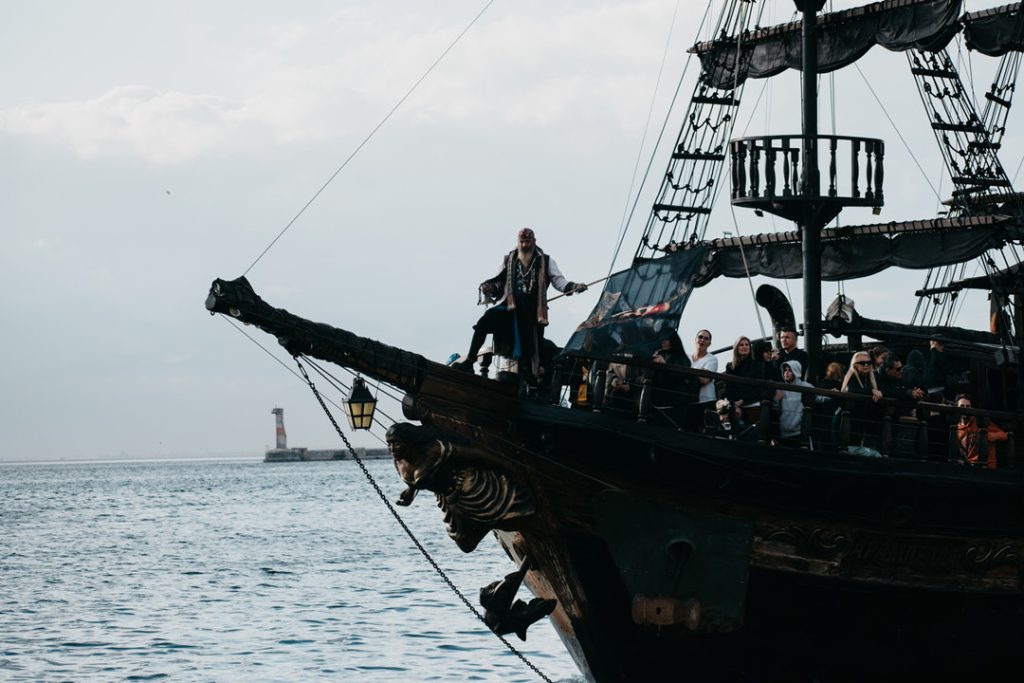
Illegal Fishing and Environmental Damage
While maritime security traditionally focuses on human trafficking, migrant smuggling, and piracy, illegal fishing has become a significant issue.
Illegal, Unreported, or Unauthorised (IUU) fishing happens when foreign vessels operate without permission in state-controlled waters, violating established rules on fishing times and harvesting.
A Financial Transparency Coalition (FTC) study reveals that IUU fishing accounts for up to one-fifth of global fisheries catches, valued at around 23.5 billion USD annually. The economic losses, estimated at 50 billion USD, make it the third most lucrative natural resource crime after timber and mining.
Africa faces a substantial challenge, hosting 48.9% of identified vessels involved in IUU fishing, with 40% concentrated in West Africa, a global epicenter for these activities.
Additionally, illegal marine pollution, involving the unauthorized discharge of pollutants into the sea, has escalated, presenting a more severe threat than ever before.
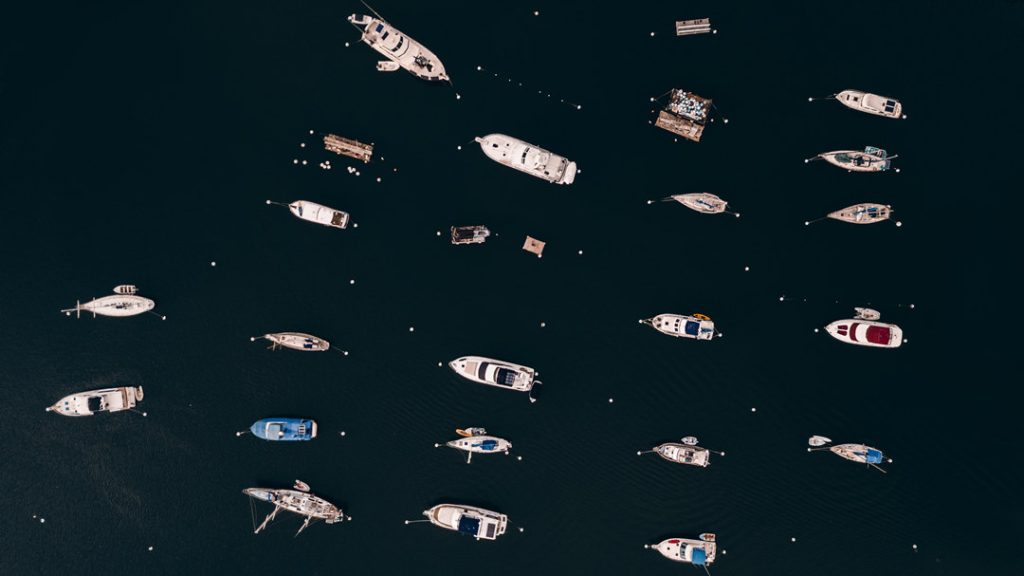
Offshore Oil Platform Accidents
Extracting oil from the ocean floor carries inherent risks, including spills and explosions, with significant consequences for marine ecosystems and coastal communities.
Between 2007 and 2018, 33 offshore oil rigs exploded in the U.S., causing rare but severe outcomes, including fatalities.
The Deepwater Horizon explosion in 2010 stands out as one of the most notable incidents, resulting in the largest oil spill in history.
Triggered by a sudden burst of natural gas, it claimed 11 lives and spilled four million barrels of oil into the Gulf of Mexico over 87 days. BP, the responsible company, spent over $14 billion on cleanup between 2010 and 2015, with the overall disaster cost estimated to exceed $65 billion.

Maritime Security Strategies and Solutions
Safeguarding our maritime domains requires a multifaceted approach that combines international cooperation, advanced technologies, and innovative solutions.
Surveillance and Monitoring
In maritime surveillance, traditional methods like patrol boats, aerial patrols, and high-frequency radio monitoring are common. Patrol boats visually identify suspicious activities but have limited coverage. Aerial patrols offer broader coverage but still miss some areas.
High-frequency radio monitoring gives valuable vessel movement info but is limited by frequencies. Technological advances introduce new methods, such as the Automatic Identification System (AIS) for real-time vessel tracking. Radar tech works well in varied conditions, enhancing surveillance reliability. Satellite tech covers larger areas, monitoring vessel behavior changes. Underwater sensors track underwater activities for a comprehensive view.
No surveillance method is perfect, emphasizing the need to integrate various technologies and human expertise. Combining modern tech with traditional methods ensures a clear, detailed maritime activity picture for effective surveillance.
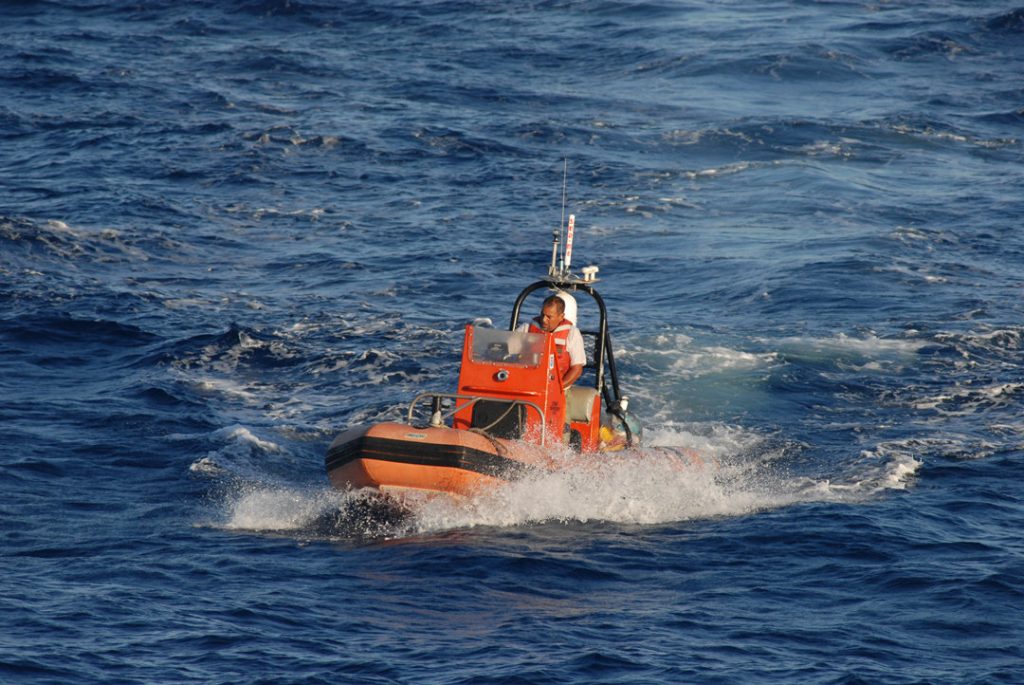
Port Security Measure
To enhance physical security at ports, focus on technology and human aspects. Use smart sensing tech like infrared sensors and motion detectors, along with intelligent fencing systems, to monitor and prevent unauthorized access. Access control checkpoints can benefit from advanced authentication tech like fingerprint recognition and iris scanning.
Surveillance goes beyond CCTV; employ intelligent video analytics and drones for timely threat identification, especially in challenging conditions. Unmanned patrol boats with autonomous navigation enhance patrolling efficiency on land and water. Train security personnel using virtual reality simulations for improved emergency response.
Integrate smart chip technology into port security cards to prevent identity forgery. Regular security training ensures authorized personnel can effectively use these systems. Establish a comprehensive incident response plan in collaboration with local law enforcement and emergency organizations for quick and coordinated responses to unexpected incidents.
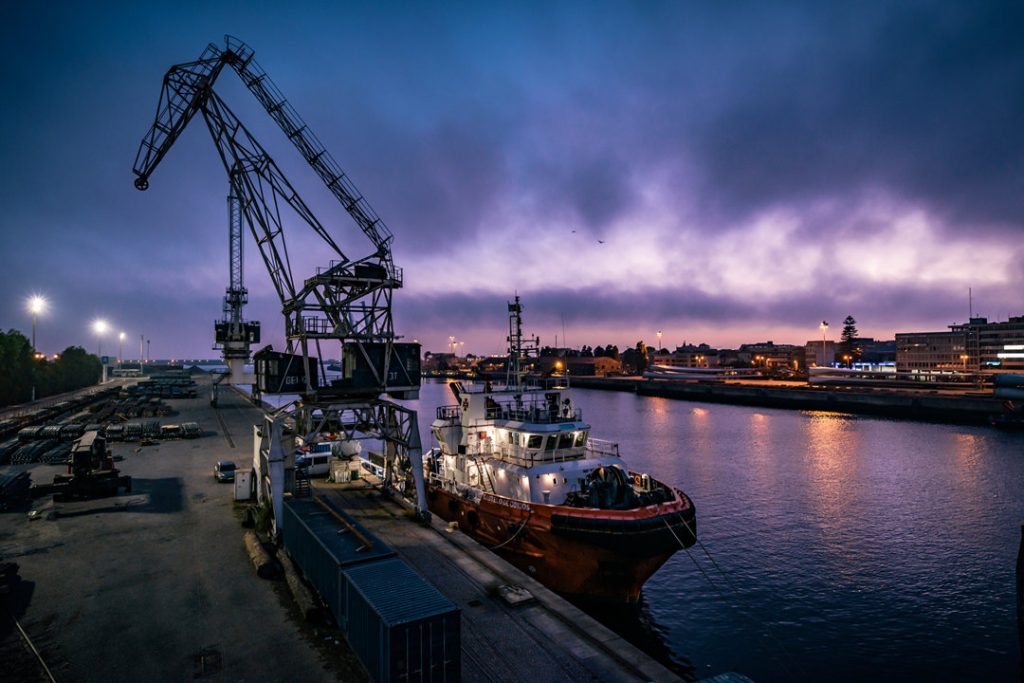
Cybersecurity
Regularly assess vulnerabilities in both onboard IT and operational technology (OT) systems. Understand the specific cyber threats tailored to your organization's operations, cargo type, and geographic location. Develop a dynamic risk management plan that prioritizes vulnerabilities based on their likelihood and impact, implementing mitigation strategies accordingly.
Enforce robust security measures without compromising usability. Implement strict password policies, limit access to critical systems, and utilize multi-factor authentication where feasible. Keep software and firmware up to date to promptly address known vulnerabilities. Safeguard systems by segmenting IT and OT networks, preventing the spread of cyberattacks between them. Prioritize secure communication protocols, employing encryption for all data transmissions, whether onboard or ashore.
Consider cyber insurance to mitigate potential financial losses resulting from cyberattacks. Stay ahead of emerging threats by subscribing to threat intelligence feeds. Proactively identify and address vulnerabilities through simulated cyberattacks, utilizing techniques like red teaming and penetration testing.

Maritime Security Training
From piracy and terrorism to illegal trafficking and environmental threats, the vastness and complexity of the seas demand a specialized skillset to ensure safety and security. Maritime security training equips individuals and organizations with the knowledge, skills, and procedures to navigate these risks and protect vital interests.
For Seafarers and Shipboard Personnel:
- Basic Security Awareness: Covering the fundamentals of identifying security threats, reporting suspicious activities, and implementing onboard security measures.
- Vessel Security Officer (VSO) Training: Preparing individuals for the critical role of developing and implementing ship security plans, conducting drills, and liaising with authorities.
- Specific Skills Training: Tailored to roles, this includes training in firefighting, first aid, search and rescue, and basic medical care.
For Port and Shore-Based Personnel:
- Port Security Management: Equipping personnel with skills to secure port facilities, manage access control, and implement security measures against threats like illegal cargo and stowaways.
- Cybersecurity in Maritime Operations: Covering protection of critical IT infrastructure and onboard systems from cyber threats, including mitigation strategies and incident response procedures.
- Maritime Law Enforcement: Focused on maritime patrol techniques, evidence collection, interdiction procedures, and collaboration with international partners.
For Government Agencies and Regulators:
- Maritime Policy and Regulations: Providing government officials and regulators with a deep understanding of international maritime law, security regulations, and best practices for effective enforcement.
- Maritime Threat Analysis and Risk Assessment: Training in intelligence analysis, risk assessment methodologies, and threat identification to inform effective maritime security strategies.
- Maritime Cooperation and Coordination: Emphasizing the importance of building and maintaining strong partnerships with international stakeholders to address transnational maritime threats.
- Various organizations contribute to maritime security training, including government agencies, international bodies such as the IMO and IACS, and private training companies specializing in maritime security. They cater to the needs of commercial shipping companies, port operators, and other industry players.

Risk Assessment and Intelligence Sharing
Risk assessment and intelligence sharing play a crucial role in maritime security. By thoroughly identifying vulnerabilities in infrastructure, vessels, and procedures, we gain a more comprehensive understanding of potential security risks. This not only helps strengthen preventive measures but also enhances our capability to respond to unforeseen events.
While implementing risk assessments, analyzing trends and patterns of maritime crime becomes paramount. In-depth analysis of past incidents allows us to identify patterns in criminal activities, enabling us to more accurately predict and prevent future events. This proactive approach contributes significantly to achieving positive outcomes in ensuring maritime security.
Furthermore, fostering collaboration and information exchange among stakeholders such as law enforcement agencies, coast guards, shipping companies, and port authorities is indispensable in ensuring maritime security. By establishing close cooperative relationships, parties can share intelligence, experiences, and resources, creating a more coordinated defense. This multi-agency collaboration not only strengthens security awareness but also enhances overall efficiency in responding to emergencies.
Partnerships and Collaboration
Establishing robust partnerships is a crucial step in ensuring maritime security. This necessitates collaborative efforts from governments, international organizations, private sectors, and civil societies. By fostering close cooperation among these entities, we can more effectively address maritime security challenges. This includes sharing intelligence, resources, and technology to collectively combat activities like piracy, illegal fishing, and other threats.
To enhance public awareness of the importance of maritime security, we need to strengthen education and outreach. This can be achieved through conducting awareness campaigns, organizing workshops, and utilizing social media platforms. Simultaneously, it's essential to encourage community involvement, prompting them to actively report suspicious activities, thereby strengthening overall societal focus and support for maritime security.
How Can Maritime Security be Improved: Technology and Innovation
Technology and innovation play pivotal roles in safeguarding the vast expanses of our oceans. From advanced surveillance systems to cutting-edge communication tools, these developments contribute to more effective and proactive strategies.
Autonomous Unmanned Aerial Vehicles (UAVs)
Autonomous drones are transforming maritime safety. Unlike human pilots needing rest, these drones patrol continuously, boosting the chances of spotting suspicious activities.
Take the JOUAV CW-30E VTOL drone, for example. It's equipped with high-tech cameras, radar, infrared imaging, and lidar, providing a thorough understanding of the maritime environment. With the ability to take off and land on moving ships, lasting up to 480 minutes in the air, covering 200 km without frequent recharging, it excels in performance.
This maritime drone uses advanced AI algorithms for real-time analysis of sensor data, autonomously identifying threats. When a threat is detected, it can immediately initiate pre-programmed response protocols, including alerting authorities, deploying more drones or assets, or even taking tactical actions.
To support takeoff from a moving ship, the CW-30E incorporates sophisticated stabilization systems. These systems compensate for the ship's motion, ensuring a stable platform for vertical takeoff.
Compared to traditional methods, autonomous drones offer a cost-effective solution for large-scale patrols, reducing manpower and operational costs. They eliminate the risk of personnel casualties, marking a new era in maritime safety.
Autonomous Underwater Vehicles (AUVs)
AUVs aren't just for detecting mines; they excel in diverse underwater missions. Unlike surface vessels or drones, they shine in dark, deep waters. Ideal for marine research, infrastructure checks, and security.
With advanced sonar and cameras, AUVs operate seamlessly in complex underwater terrains, mapping the seafloor and inspecting critical infrastructure. Crucial for planning and executing marine engineering projects.
In security, AUVs patrol, swiftly detecting and tracking suspicious vessels for anti-smuggling, anti-illegal fishing, and anti-piracy activities. Their underwater advantage allows silent monitoring, providing valuable intelligence for maritime security.
In search and rescue, AUVs efficiently scan large underwater areas, enhancing the chances of success in finding missing vessels or survivors. Agile and enduring, they're key in critical operations.
Big Data and Analytics
Analyzing AIS data allows maritime authorities to track vessels in real-time, identifying suspicious activities like sudden route changes or lingering in restricted areas. This system enhances maritime safety, preventing malicious activities and responding to emergencies swiftly.
For countering piracy, analyzing historical attack data helps identify high-risk areas. This proactive approach lets authorities deploy resources to deter potential attacks, responding quickly to threats and ensuring safe navigation.
In assessing risks for individual vessels and cargo, analyzing past incidents, ownership, and manifests is crucial. This enables authorities to create profiles, optimize resource allocation, and focus on high-risk cases, enhancing law enforcement efficiency.
In disaster and environmental aspects, Big Data tracks issues like oil spills, illegal dumping, and overfishing, protecting marine ecosystems. Weather data analysis improves search and rescue operations, ensuring a rapid and targeted emergency response.
Also, optimizing port operations and identifying security risks form essential applications of Big Data in maritime management, creating a comprehensive safety system.
Artificial Intelligence (AI)
AI's power lies in efficiently processing diverse data sources. Integrating radar, cameras, satellites, and AIS, it identifies imperceptible patterns and anomalies in maritime activities.
This analysis extends to weather, traffic, and historical data, enabling predictions of threats like pirate attacks or illegal fishing. Authorities benefit from a proactive time window for resource deployment.
AI's real-time monitoring spots suspicious behavior in video, radar, and vessel movements, addressing threats swiftly. Its automated execution handles routine tasks, freeing human resources for more complex, intellectually demanding duties. This synergy makes AI indispensable in maritime security.
The CW-25 drone, fitted with the MG-150E gimbaled camera, has successfully captured video footage of dolphins identified by artificial intelligence (AI) during the Maui Dolphin Project in New Zealand.
Blockchain Technology
Blockchain tech boosts transparency and combats illegal activities in supply chain management. By creating tamper-proof records, it offers real-time, reliable data for the entire supply chain.
Beyond regular transactions, blockchain tracks and fights illegal goods like drugs and weapons. Documenting ownership and sources aids law enforcement, swiftly dismantling smuggling networks for a safer society.
Additionally, blockchain automates tasks like issuing bills, handling customs, and verifying insurance claims, cutting costs and errors. This efficient model enhances business competitiveness, ensuring stable and reliable services in the supply chain.
Top 5 Maritime Security Companies
Choosing the best maritime security contractors involves careful consideration of various factors to ensure the safety and security of your maritime operations. Here are some well-known maritime security companies:
Seagull Maritime Security
Based in Malta, Seagull Maritime Security offers top-tier maritime security and anti-piracy services, specializing in safeguarding commercial merchant ships in high-risk areas like the Indian Ocean, Red Sea, and Gulf of Aden.
The security teams, comprised of seasoned personnel with Naval Commando and elite special operations backgrounds, are adept at countering diverse threats at sea, particularly maritime piracy. With a successful track record, Seagull has provided effective security for hundreds of voyages, demonstrating its commitment to ensuring safe and secure maritime travel.
Global Guardian
Global Guardian, a leading security company, offers comprehensive sea freight security services, including risk assessments, security planning, and cutting-edge vessel tracking. Beyond maritime security, the company provides intelligence solutions, medical support, and travel risk management globally.
Armed security personnel are deployed for ships and cargo, coupled with specialized training for ship crews. This holistic approach, blending advanced technology and diverse services, solidifies Global Guardian's position as a trusted partner in ensuring unparalleled security for sea freight operations worldwide.
Maritime and Underwater Security Consultants (MUSC)
For 37 years, MUSC (Maritime and Underwater Security Consultants) has been a leader in maritime security. Licensed by the UK government, MUSC offers armed maritime security services, including anti-piracy measures, ship and port security, and assessments for shipping companies. The company specializes in protecting subsea pipelines and disposing of explosive materials. Services also include onboard security teams, counter-piracy auditing, vessel hardening, and route planning.
MUSC goes beyond security, providing consultancy, training, and support to combat issues like weapons smuggling, drug trafficking, and illegal immigration. The company's commitment extends to marine environmental safeguards, contributing to a secure and sustainable maritime industry.
Hart International
Hart is a leading security and risk management company serving the maritime, energy, and infrastructure sectors. With a seasoned team, they offer armed security teams, advanced vessel tracking, and specialized security training for ship crews. Their proactive approach ensures the safety of maritime assets globally.
Beyond maritime, Hart provides tailored risk management strategies for the energy and infrastructure sectors, making them a comprehensive solution for clients worldwide.
International Maritime Security Associates (IMSA)
International Maritime Security Associates (IMSA) is a global leader in maritime risk management, technology, and software development. They offer clients intelligence data, regulatory compliance services, and strategic security consulting.
IMSA's ARMS (Automated Risk Management Solution) software embodies its philosophy of empowering individuals through technology to improve results. With a commitment to excellence, IMSA ensures clients are not only secure but strategically positioned for success in the dynamic maritime industry.
Maritime Security Regulations
Maritime security regulations form a complex and vital framework comprised of both international and national laws, codes, and standards.
International Maritime Organization (IMO)
The United Nations agency at the forefront of developing and upholding a comprehensive set of international maritime regulations is the International Maritime Organization (IMO). Key instruments integral to maritime security include:
- International Convention for the Safety of Life at Sea (SOLAS): Chapter XI-2 of SOLAS addresses specific requirements for ship security. It mandates governments to establish national ship security regimes, laying down minimum security standards for ships.
- International Ship and Port Facility Security Code (ISPS Code): Adopted in 2002, this mandatory instrument by IMO necessitates governments to establish port security regimes. It delineates minimum security standards for both ports and ships, covering a broad spectrum of security measures, ranging from physical security to personnel security, cargo security, and cyber security.
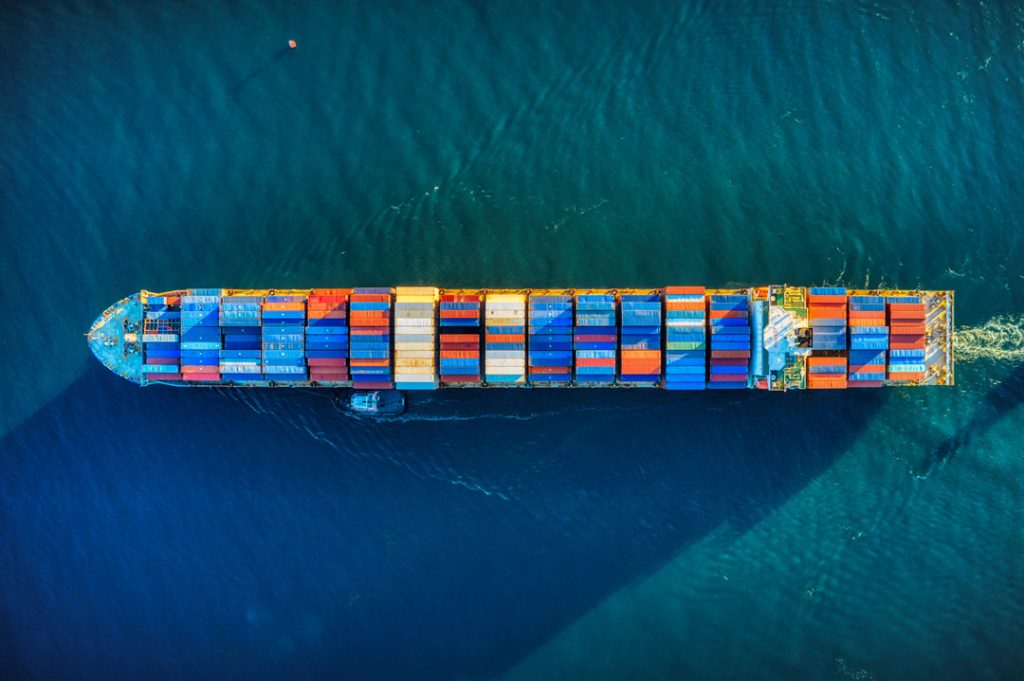
National Regulations
Complementing international regulations, individual countries often enact their own national maritime security regulations. These regulations typically build upon and enhance the stipulations set by the IMO instruments. Examples of such national regulations include:
- United States: The Maritime Transportation Security Act (MTSA) of 2002 serves as the primary legislation governing maritime security in the U.S. It not only implements the ISPS Code but also introduces additional security requirements for ports, vessels, and cargo.
- European Union: The EU has embraced various maritime security regulations, including the Regulation on the Security of Maritime Transport (Regulation (EU) No 356/2014). This regulation not only implements the ISPS Code but also establishes supplementary security requirements for EU member states.
Key Elements of Maritime Security Regulations
Maritime security regulations typically address several crucial elements to ensure a comprehensive approach to security:
- Port Security: Involves measures to secure ports from unauthorized access, encompassing physical barriers, access control systems, and security patrols.
- Ship Security: Encompasses measures to safeguard ships from piracy, terrorism, and other threats. This involves ship security plans, onboard security procedures, and training for crew members.
- Cargo Security: Encompasses measures to prevent the smuggling of illicit goods, including container security procedures and cargo tracking systems.
- Cyber Security: Involves measures to protect maritime infrastructure from cyberattacks, incorporating cyber security plans and personnel training.
Enforcement of Maritime Security Regulations
The enforcement of these regulations primarily falls under the purview of national governments. This may involve dedicated maritime security agencies or specialized units within existing law enforcement agencies, tasked with ensuring compliance and responding to security threats in the maritime domain. The collaborative efforts at both international and national levels underscore the significance of maritime security regulations in maintaining the safety and integrity of the global maritime transportation system.
FAQ
What Are the 3 Levels of Maritime Security?
In maritime security, there are three main levels of security, often referred to as MARSEC Levels, outlined by the International Ship and Port Facility Security (ISPS) Code. These levels define the necessary security measures to protect ships and port facilities from threats and incidents.
| Level | Threat Level | Security Measures |
| 1 (Normal) | Default operating level | Minimum measures: access control, identification, physical security, patrols, surveillance, reporting, security training |
| 2 (Heightened) | Elevated risk of incident | Enhanced measures: more frequent patrols, stricter access control, movement restrictions, increased vigilance, reporting |
| 3 (Exceptional) | Probable or imminent incident | Strictest measures: all of the above + preparation for armed response, evacuation procedures, heightened communication, operation restrictions/suspension |
It's crucial to understand that these levels are dynamic and subject to change based on risk assessments and intelligence gathered by maritime security agencies and stakeholders.
Who is Responsible for Maritime Security?
Maritime security is a collaborative effort involving various entities at national and international levels. Key players include:
- Governments and Regulatory Bodies: National governments are responsible for implementing and enforcing maritime security regulations. Regulatory bodies, such as the Coast Guard, play a crucial role in monitoring and ensuring compliance.
- International Organizations: Organizations like the International Maritime Organization (IMO) set global standards and guidelines for maritime security. They facilitate cooperation among nations to address common threats.
- Port Authorities: Local port authorities are responsible for implementing security measures within their jurisdictions. They often work in coordination with national and international agencies.
- Ship Owners and Operators: Those involved in maritime transportation, including ship owners and operators, bear responsibility for implementing security measures on their vessels.
- Security Agencies: Specialized maritime security agencies, both public and private, contribute to safeguarding against potential threats. They may conduct patrols, surveillance, and respond to security incidents.
When Was the Maritime Transportation Security Act Passed?
The Maritime Transportation Security Act (MTSA) was passed on November 25, 2002. It was enacted in the United States to enhance maritime security and protect against potential terrorist attacks on U.S. ports and waterways.
What is a Maritime Security Drill?
A maritime security drill is a planned exercise conducted to assess and improve the readiness and effectiveness of security measures in response to potential threats in the maritime domain.
These drills simulate various security scenarios, including terrorist attacks, piracy, or other criminal activities. They involve coordination between vessels, port facilities, and relevant authorities to test communication, response procedures, and the overall security infrastructure.
What are Area Maritime Security Plans?
Area Maritime Security Plans (AMSPs) are comprehensive documents developed by port authorities and stakeholders to address and enhance maritime security within a specific geographic area. These plans detail security measures, response protocols, and coordination mechanisms to protect vessels, port facilities, and surrounding waters from security threats.
How to Get Into Maritime Security?
Getting into maritime security involves a combination of education, training, and practical experience. Here's a step-by-step guide:
- Educational Background: Consider obtaining a relevant degree in fields like maritime security, criminal justice, or international relations.
- Training and Certifications: Enroll in recognized maritime security training programs and obtain certifications such as the Ship Security Officer (SSO) certificate.
- Gain Experience: Seek entry-level positions in security, law enforcement, or the maritime industry to gain practical experience.
- Networking: Attend industry events, join professional associations, and connect with individuals working in maritime security.
- Apply for Jobs: Look for job opportunities with maritime security companies, government agencies, or private organizations involved in maritime security.
- Continued Professional Development: Stay updated on industry trends, regulations, and technologies to enhance your skills and knowledge in maritime security.




